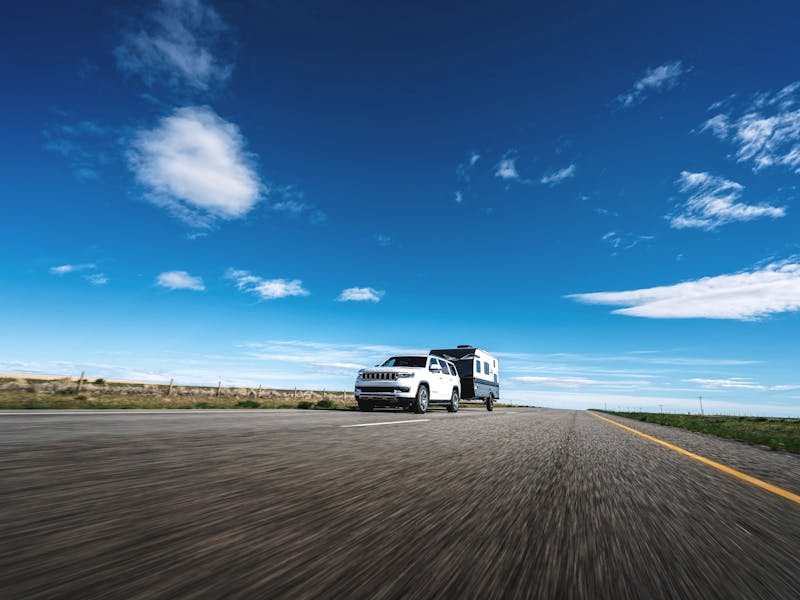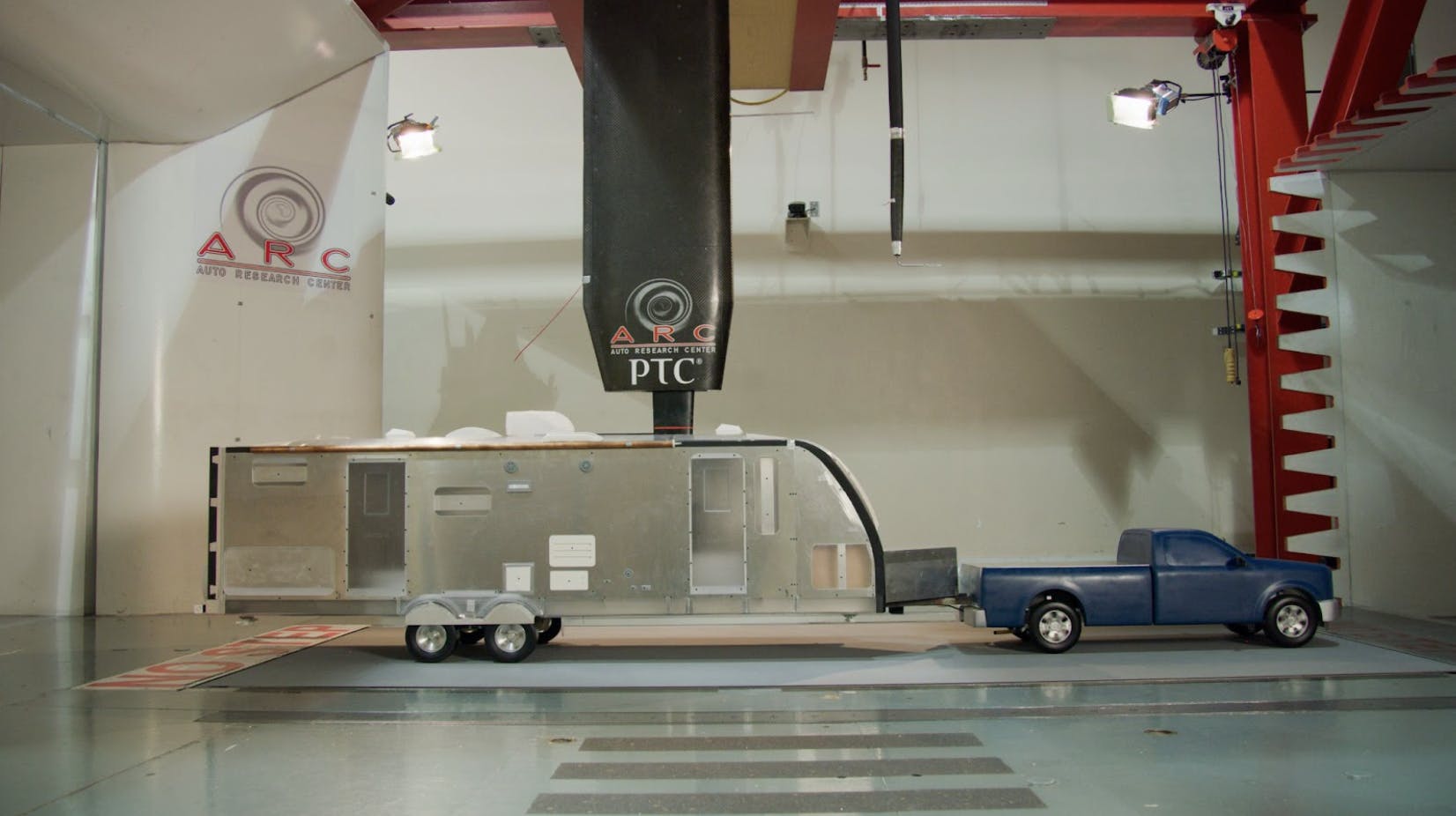Blog: Lessons from the Tunnel


How do you make it easier and less expensive to operate an RV? With apologies to Bob Dylan, the answer is blowin’ in the wind (tunnel).
THOR’s Global Innovation Team recently took a deep dive into the aerodynamics of selected THOR travel trailers as part of an ongoing effort to improve the towable and motorized RV experiences and reduce ownership costs. This intensive study, which uses advanced digital and physical modeling techniques, has revealed opportunities for potential improvement in the towable products offered across our family of companies.
In phase one of the study, Global Innovation Team researchers, working with a team of aerodynamics experts, used a digital tool called computational flow dynamics modeling (CFD) to create a computer simulation of how air flows around each of the three travel trailers included in the test. In the second phase of the research, a precise ¼ scale model of each trailer and tow vehicle was built and placed in a wind tunnel. A giant turbine sent air whooshing and swirling past the scaled-down trailers and vehicles as highly sensitive equipment measured the pressure created by the moving air.
Finding and Eliminating Drag
This rigorous testing is focused on reducing drag, which is the sworn enemy of aerodynamic efficiency. Drag is the force generated by an object’s interaction and contact with a gas or liquid medium. In the case of an RV, that medium is air.
Drag can be reduced by maximizing what’s known as attached airflow, which is the stream of air that stays close to the vehicle’s surface and is guided by the vehicle’s shape as it moves down the highway. Attached flow often yields significantly less drag, so designers or engineers strive to keep flow attached to a car, boat or RV for as long as possible. Once this flow detaches from the vehicle’s surface, it becomes a separate flow, a significant drag source.
In its most recent testing, the Global Innovation Team conducted 57 iterations of its CFD tests and executed 64 distinct wind tunnel test segments. Next, they sifted and studied the resulting data to identify sources of air turbulence, which creates the conditions for air separation and a resulting increase in drag.
Unsurprisingly, it turns out the area between the tow vehicle and the trailer causes significant turbulence. When air moves off the tow vehicle's roof, it becomes turbulent as it passes through the open area around the hitch and back toward the travel trailer. In the case of an SUV, the air movement creates a vortex between the vehicle and the trailer – which in turn creates low pressure and drag, resulting in a less efficient towing experience.
Informed by these results, the Global Innovation Team began exploring ways to minimize common causes of RV turbulence and drag. Among the outcomes are possible ways to tame that troublesome hitch area airflow and solutions for streamlining the RV roof, which is traditionally home to several drag-inducing systems components.

Small Models, Big Findings
Potential improvements were easy to test using the scale models. The engineering team simply made quick and easy adjustments to the models and ran multiple tests to understand how adding or subtracting a particular exterior component would affect aerodynamics.
The insights gained from this ongoing aerodynamic research investment is shared with innovators across the THOR family of companies to help them create best-in-class products for their customers.
No single modification will be an aerodynamic game-changer. Still, the cumulative gains from many small improvements can significantly improve the RV experience by allowing owners to spend less on gas today, go farther on a battery charge tomorrow, and help protect the environment for future generations.